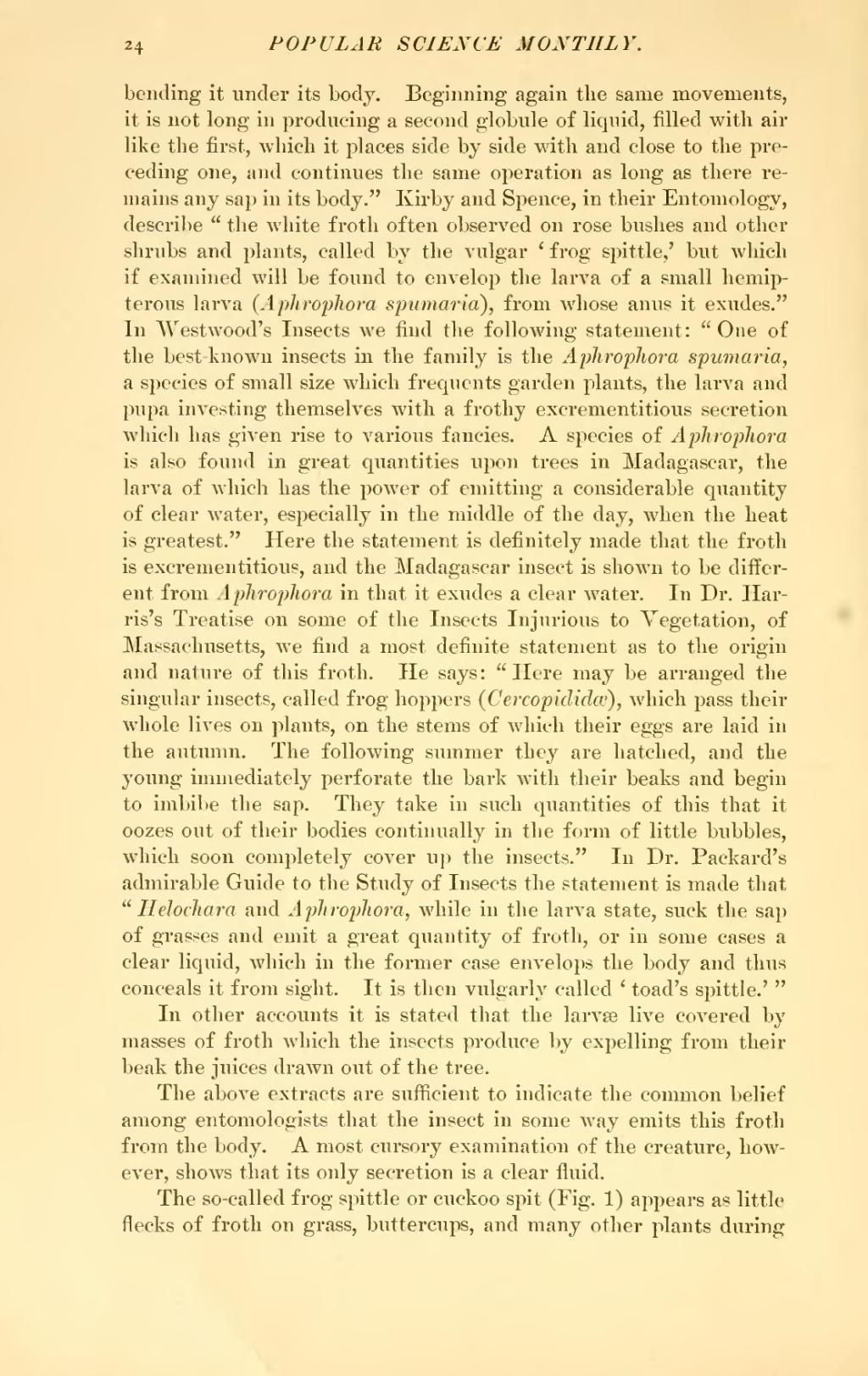bending it under its body. Beginning again the same movements, it is not long in producing a second globule of liquid, filled with air like the first, which it places side by side with and close to the preceding one, and continues the same operation as long as there remains any sap in its body." Kirby and Spence, in their Entomology, describe "the white froth often observed on rose bushes and other shrubs and plants, called by the vulgar 'frog spittle,' but which if examined will be found to envelop the larva of a small hemipterous larva (Aphrophora spumaria), from whose anus it exudes." In Westwood's Insects we find the following statement: "One of the best-known insects in the family is the Aphrophora spumaria, a species of small size which frequents garden plants, the larva and pupa investing themselves with a frothy excrementitious secretion which has given rise to various fancies. A species of Aphrophora is also found in great quantities upon trees in Madagascar, the larva of which has the power of emitting a considerable quantity of clear water, especially in the middle of the day, when the heat is greatest." Here the statement is definitely made that the froth is excrementitious, and the Madagascar insect is shown to be different from Aphrophora in that it exudes a clear water. In Dr. Harris's Treatise on some of the Insects Injurious to Vegetation, of Massachusetts, we find a most definite statement as to the origin and nature of this froth. He says: "Here may be arranged the singular insects, called frog hoppers (Cercopididæ), which pass their whole lives on plants, on the stems of which their eggs are laid in the autumn. The following summer they are hatched, and the young immediately perforate the bark with their beaks and begin to imbibe the sap. They take in such quantities of this that it oozes out of their bodies continually in the form of little bubbles, which soon completely cover up the insects." In Dr. Packard's admirable Guide to the Study of Insects the statement is made that "Helochara and Aphrophora, while in the larva state, suck the sap of grasses and emit a great quantity of froth, or in some cases a clear liquid, which in the former case envelops the body and thus conceals it from sight. It is then vulgarly called 'toad's spittle.'"
In other accounts it is stated that the larvæ live covered by masses of froth which the insects produce by expelling from their beak the juices drawn out of the tree.
The above extracts are sufficient to indicate the common belief among entomologists that the insect in some way emits this froth from the body. A most cursory examination of the creature, however, shows that its only secretion is a clear fluid.
The so-called frog spittle or cuckoo spit (Fig. 1) appears as little flecks of froth on grass, buttercups, and many other plants during
